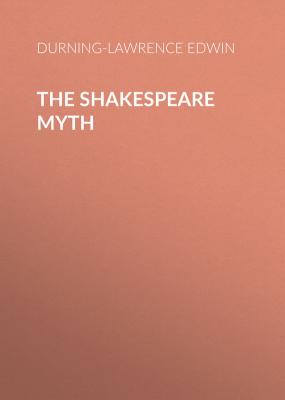ТОП просматриваемых книг сайта:
The Shakespeare Myth. Durning-Lawrence Edwin
Читать онлайн.Название The Shakespeare Myth
Год выпуска 0
isbn
Автор произведения Durning-Lawrence Edwin
Жанр Зарубежная классика
Издательство Public Domain
This fact disposes once and for all of the Shakespeare myth, and I will now proceed to prove by a few contemporary evidences that the real author was Francis Bacon.
I place before the reader on page 11 a photographically enlarged copy of the engraved title page of Bacon's work, the De Augmentis, which was published in Holland in 1645. "De Augmentis" is the Latin name for the work which appeared in English as the Advancement of Learning.
This same engraved title page was for more than one hundred years used for the title page of Vol. I. of various editions of Bacon's collected works in Latin, which were printed abroad. The same subject, but entirely redrawn, was also employed for other foreign editions of the De Augmentis, but nothing in any way resembling it was printed in England until quite recently, when photo-facsimile copies were made of it for the purpose of discussing the authorship of the "Shakespeare" plays. In this title page we see in the foreground on the right of the picture (the reader's left) Bacon seated with his right hand in brightest light resting upon an open book beneath which is a second book (shall we venture to say that these are the De Augmentis and the Novum Organum?), while with his left-hand in deepest shadow, Bacon is putting forward a mean man, who appears to the careless observer to be running away with a third book. Let us examine carefully this man. We shall then perceive that he is clothed in a goat skin. The word tragedy is derived from the Greek word tragodos, which means an actor dressed in a goat skin. We should also notice that the man wears a false breast to enable him to represent a woman; there were no women actors at the time of Shakespeare's plays. The man, therefore, is intended to represent the tragic muse. With his left hand, and with his left hand only, he grips strongly a clasped sealed, concealed book, which by the crossed lines upon its side (then, as now, the symbol of a mirror) is shewn to be the "Mirror up to Nature," the "Book of the Immortal Plays," known to us under the name of Shakespeare, which, together with Bacon's De Augmentis and his Novum Organum, makes up the "Great Instauration," by which Bacon has "procured the good of all men."
Конец ознакомительного фрагмента.
Текст предоставлен ООО «ЛитРес».
Прочитайте эту книгу целиком, купив полную легальную версию на ЛитРес.
Безопасно оплатить книгу можно банковской картой Visa, MasterCard, Maestro, со счета мобильного телефона, с платежного терминала, в салоне МТС или Связной, через PayPal, WebMoney, Яндекс.Деньги, QIWI Кошелек, бонусными картами или другим удобным Вам способом.

